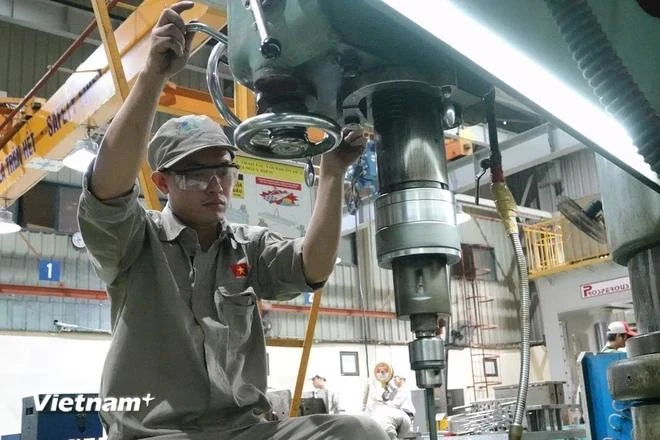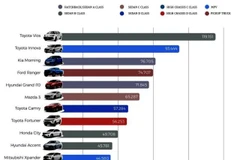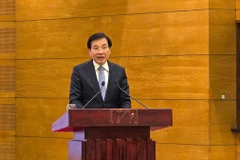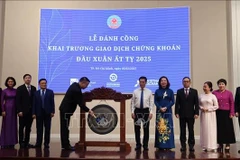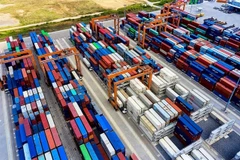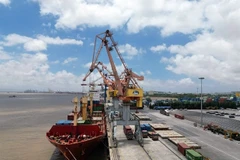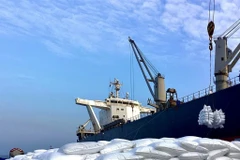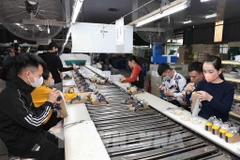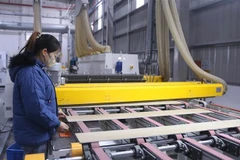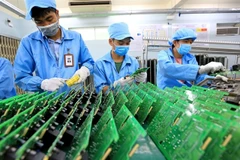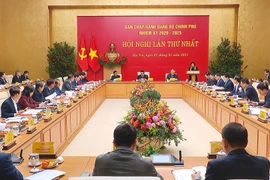Hanoi (VNA) - To increase values and foster sustainable export, Vietnam’s manufacturing and processing industries are being urged to adopt more advanced and professional practices. This includes embracing cutting-edge technologies to optimise efficiency, reduce waste, and meet the rigorous demands of global markets.
The manufacturing and processing sector is one of the key sectors of the Vietnam’s economy, driving industrial growth, trade, and exports. Key subsectors such as textiles, footwear, electronics, and supporting industries play pivotal roles, cementing the country’s position as a vital link in the global supply chain.
Since early 2024, Vietnam’s industrial sector has experienced widespread recovery, with production hubs nationwide reporting robust growth. This resurgence presents an opportunity for businesses to expand their market reach and capture new opportunities in international trade.
According to Phan Thi Thanh Xuan, Vice Chairwoman and General Secretary of the Vietnam Leather, Footwear, and Handbag Association (LEFASO), export orders began picking up in late 2023.
During the first nine months of 2024, exports in this sector generated 19.4 billion USD, marking a 12.5% year-on-year increase. Footwear alone contributed 16.3 billion USD, while handbags added over 3 billion USD. Full-year exports are projected to reach 26 - 27 billion USD.
Vietnam’s major export markets, including the US, the EU, the Republic of Korea, Japan, and China, have shown steady growth. Additionally, businesses are exploring new markets, particularly those with which Vietnam has signed free trade agreements (FTAs) like the Middle East.

Xuan noted that trade promotion activities, supported by Vietnamese trade offices abroad, have significantly facilitated this success.
However, she also highlighted challenges, particularly the increasingly stringent requirements in key markets. These include traceability demands for materials and risk of anti-dumping duties in countries to which Vietnam’s exports post sharp growth such as Mexico and India.
Overcoming these hurdles requires concerted efforts. Xuan stressed the importance of supporting small and medium enterprises (SMEs) through trade promotion initiatives to attract clients and expand their reach.
Similarly, Smart Vietnam Precision Mechanical Joint Stock Company has witnessed rapid growth, fueled by shifting orders from countries like the US, the UK, and Australia. Sales surged by 178% in the first nine months of 2024, with full-year growth projected at 230 - 250%.
However, Smart Vietnam’s CEO Cao Van Hung pointed out certain obstacles, including a shortage of skilled labour and limited collaboration with other firms to fulfil large orders.
Hung noted that while opportunities are abundant, many businesses lack the capability to capitalise on them and meet quality standards.

Developing the industrial sector is integral to the country’s broader industrialisation and modernisation goals. Manufacturing and processing contribute significantly to GDP, and the sector aims to reach 25% of GDP by 2025.
Economic expert Nguyen Minh Phong emphasised the ripple effect of the manufacturing and processing industry, which not only attracts substantial domestic and foreign direct investment (FDI) but also generates employment and drives economic growth. FDI in this industry consistently represents 80 -90% of total foreign investment, underscoring its critical role in Vietnam’s export-driven economy.
Phong noted the increasing adoption of advanced technologies, such as automation and smart manufacturing, which aligns with global trends and the Fourth Industrial Revolution. These advancements position Vietnam to integrate deeper into global supply chains and increase its competitiveness.

One persistent challenge, however, is the lack of collaboration among domestic firms. Chu Viet Cuong, Director of the Centre for Industrial Development Support at the Ministry of Industry and Trade, pointed out that insufficient cooperation reduces the ability of Vietnamese businesses to meet international standards and share resources effectively.
Many supporting industry firms struggle with limited capacity for research and development, technology upgrades, and compliance with global standards. This results in missed opportunities to participate in high-value segments of global supply chains.
To address these gaps, the government and industry stakeholders have launched various initiatives. These include training programmes, trade fairs and international exhibitions, and tax incentives.
Looking ahead, Cuong recommended businesses foster partnerships with one another, invest in R&D, cut transportation time and cost, apply smart manufacturing solutions, and actively seek new markets./.
